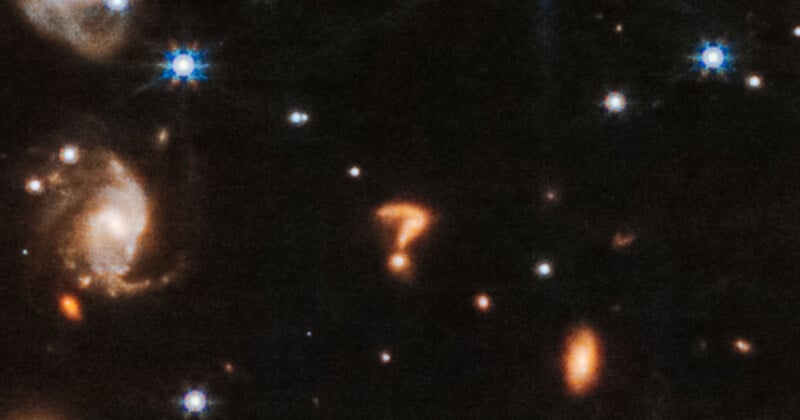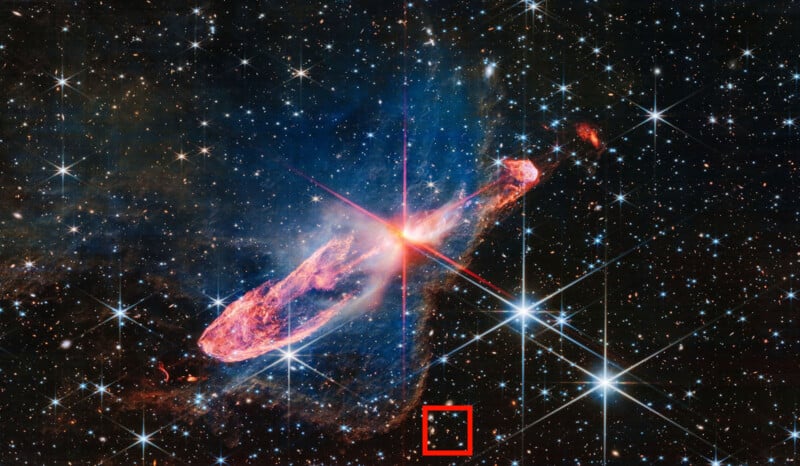Scientists Explain Cosmic ‘Question Mark’ That Puzzled the Internet

The James Webb Space Telescope recently photographed the Herbig-Haro 46/47, a pair of newly forming stars. The beautiful composite is vast and full of rich detail, including a cosmic question mark.
While PetaPixel highlighted the interesting formation in its original coverage late last month, the question mark shape has gone viral this week. It has been featured on National Geographic, Reddit, and is even the subject of a Snopes fact check. It is fair to say that the question mark in distant space has inspired many questions back on Earth.
What is the Question Mark in Space?
What is the question mark in Webb’s NIRCam composite image of Herbig-Haro 46/47? PetaPixel reached out to the Space Science Telescope Institute (STScI) in Baltimore, Maryland, to learn more.

“The question mark-shaped object is probably a pair of distant galaxies in the background which are merging,” explains Dr. Christopher T. Britt, an Education and Outreach Scientist at STScI’s Office of Public Outreach.
“As they approach and interact, the shape of each galaxy can be distorted, including by ripping out long streamers of stars and gas,” Britt continues.
Given that the question mark has a red color, it is likely that the merging galaxies are very far away. However, merging galaxies are also found much closer to Earth. The Milky Way Galaxy is merging with a nearby galaxy, in fact.
“We’re going to merge with our nearest large neighbor, the Andromeda galaxy, in another four billion years or so,” Britt says.
Frank Summers of STScI worked with Gurtina Besla from Columbia University and Roeland van der Marel (STScI) to create a visualization that shows what the merger may look like.
The near head-on collision will result in the Milky Way and Andromeda galaxies forming a new single elliptical galaxy. The collision will almost certainly have no noticeable effect on Earth, assuming it still exists in four billion years.
Back to the merging galaxies that form the cosmic question mark. Due to Webb’s unprecedented sensitivity, it frequently detects distant background galaxies like these, some of which have never been seen by human eyes before.
In PetaPixel’s interview with two image processors at STScI, Joe DePasquale and Alyssa Pagan, Pagan talked about this sort of discovery.
“When you see those background galaxies come to life, even in images that aren’t intended to be deep field images, you recognize that you might be the first person to see this background galaxy. That just kind of blows your mind,” Pagan remarked.
Sometimes these background galaxies take on mesmerizing and mysterious shapes.